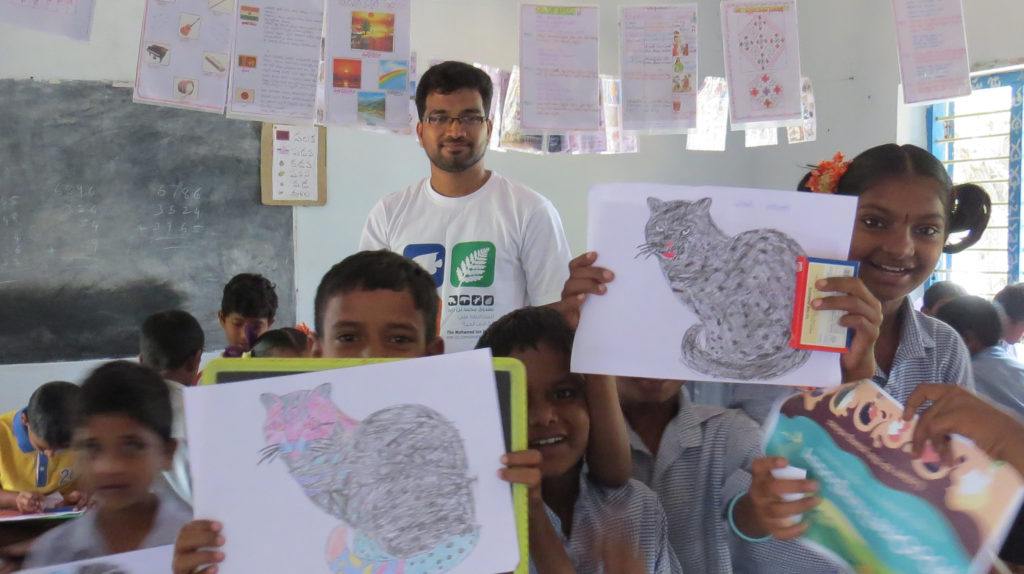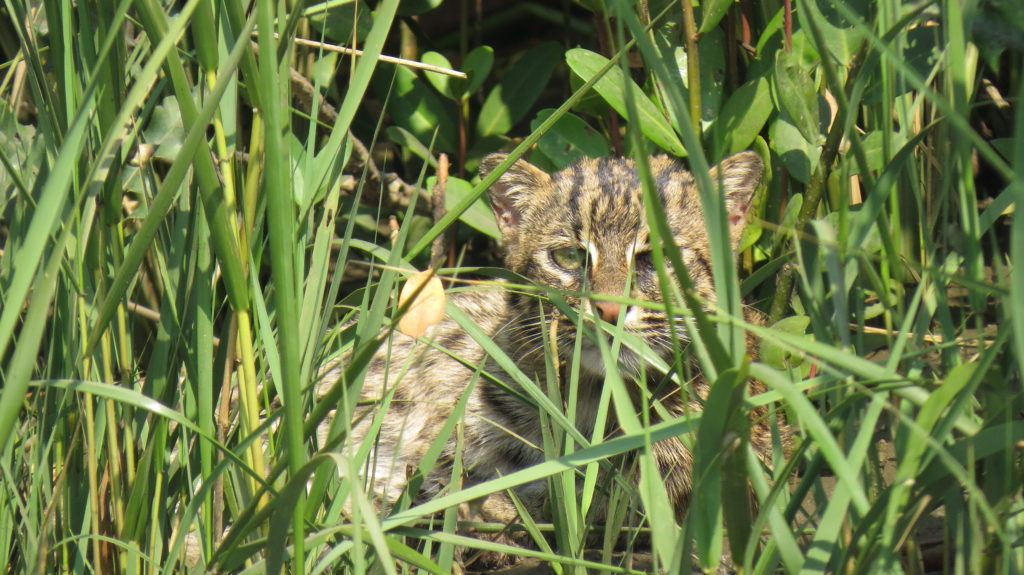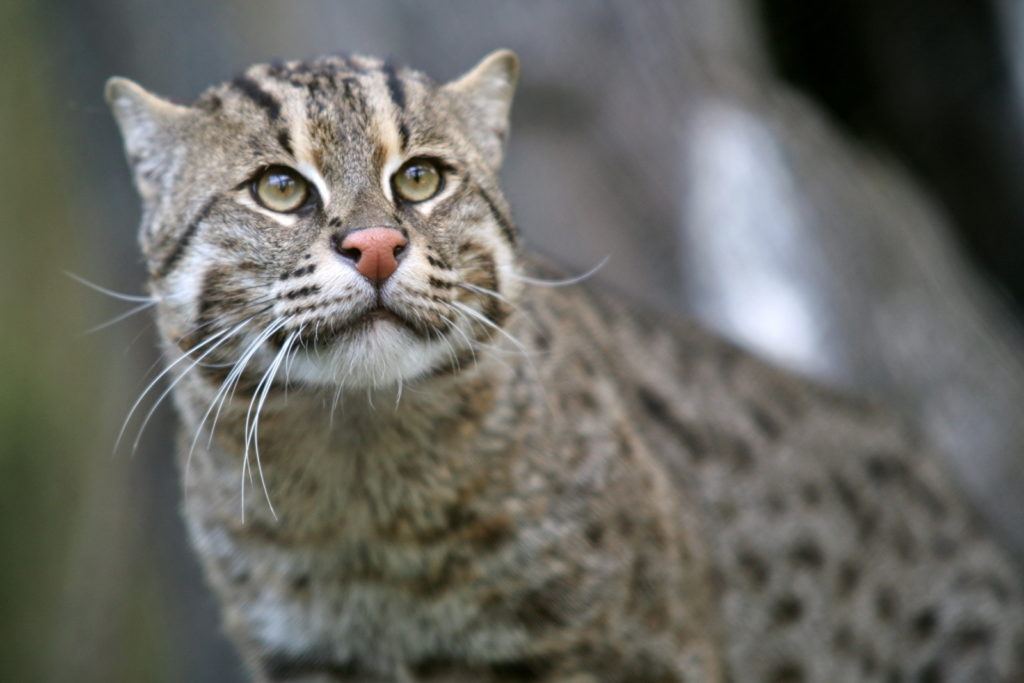Moonlight shimmers on the Godavari River, a sacred river of central and southeastern India, where a fishing cat crouches, motionless, under a tangle of mangrove trees. Her eyes reflect silver light. Suddenly she leaps, disappears underwater, and emerges with a glistening carp in her mouth. Shaking a spray of water from her coarse, olive-gray patterned fur, she settles down on the muddy riverbank to feast. A faint click sounds nearby. Tomorrow, conservationist and WCN 2018 scholarship recipient Giridhar Malla will share the sounds of the fishing cat’s vocal calls—which he has been painstakingly recording all evening, hidden in a cover of mangroves—with school children from the fishing community, as part of his “Children for Fishing Cat” program.
By raising interest in fishing cats with local children around the mangrove forests of Godavari Estuary in Coringa Wildlife Sanctuary, in Andhra Pradesh, Giridhar hopes to change their parents’ attitudes toward this highly threatened species, as well.
About twice the size of a house cat, fishing cats are primarily threatened by hunting, poaching, retaliatory killing by fishermen and livestock owners, commercial agriculture and aquaculture, and destruction of their wetland and mangrove habitats. Native to south and southeast Asia, fishing cat populations have been documented primarily in the Terai region of the Himalayan foothills in India and Nepal, in eastern India, Sri Lanka, Bangladesh, and along the coast of Thailand, with rare sightings as far south as the island of Java. These small, fragmented populations are growing increasingly vulnerable to local extinction, with populations severely declining throughout their natural home range. Giridhar is determined to make a difference. Notoriously elusive, the fishing cat is one of the world’s least-seen and least-studied wild cat species, which unfortunately also makes them one of the least-appreciated. This makes Giridhar’s research and advocacy all the more critical.
Because fishing cats are so hard to find, conservationists can only guess at their numbers. As Giridhar studies their behavior in the wild, working for the conservation of these cats and their mangrove habitats in Godavari, he hopes to also develop a technique for using his recordings of their vocal calls to assess population statistics. This wetland-associated cat species is now listed as Vulnerable in the IUCN Red List and is included under Schedule I of Indian Wildlife (Protection) Act, 1972.
The secretive, elusive nature of wild cats has fascinated Giridhar since childhood. With more than seven years of research on felids in India, he developed a strong knowledge and keen observation in the field. His first research project, in 2010, explored leopard-human conflicts in Visakhapatnam’s reserve forests. He then joined the Panthera-funded project on tiger ecology and threat mitigation in Kawal Tiger Reserve, Andhra Pradesh. Later, India’s elusive small cat species began to particularly interest him. For the last four years, he has been studying the ecology of fishing cats in the Godavari River Estuary, home to one of the largest stretches of mangroves in India. Using camera traps and scat analysis, Giridhar has—for the first time—collected critical information about their ecology and distribution in mangrove habitats. As he earns his PhD (focusing on fishing cats), his “Godavari Fishing Cat Project” will continue protecting and helping to maintain the fishing cat population in the Godavari Basin over the long-term.
With help from WCN’s 2018 scholarship, he will continue earning his PhD at the Wildlife Institute of India, studying the ecology of these beautiful cats and monitoring their population in Coringa Wildlife Sanctuary. He also plans to extend his research area to the mangrove forests outside the sanctuary, allowing him to study any movement of the cats between different mangrove patches in the region. In the future, he plans to expand fishing cat conservation efforts in the up-streams of Godavari River Valley, Andhra Pradesh and Telangana, which will also ensure support to the rich cultural aspects of fishing communities and tribal communities in those areas.




